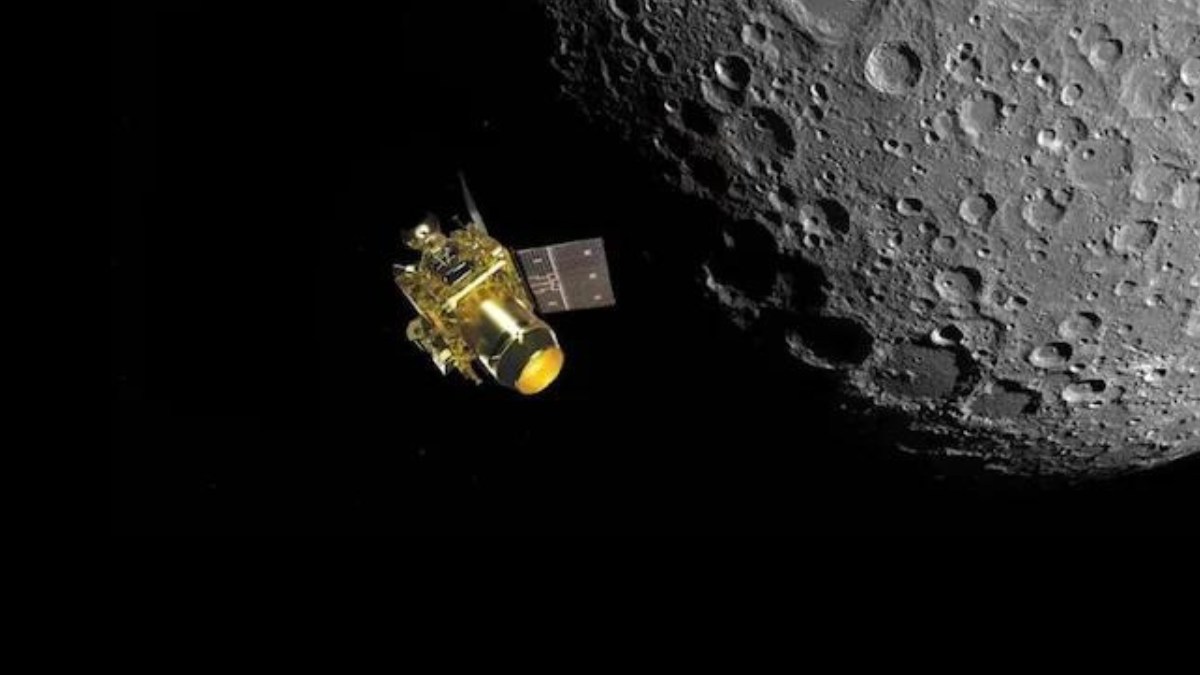Sodium Found on Moon: Indian Space Research Organization (ISRO)’s prized Chandrayaan-2 mission has been a huge success. For the first time, the Chandrayaan-2 orbiter has found traces of abundant sodium on the surface of the Moon.
The splendid discovery of sodium is mapped by the Orbiter’s X-ray spectrometer, CLASS.
CLASS was developed at ISRO’s UR Rao Satellite Center in Bengaluru, which offers accurate sodium signatures due to its high sensitivity. The Chandrayaan-1 X-ray fluorescence spectrometer (C1XS) was used to study the sodium content of the Moon after discovering sodium in its signature line in the X-rays.
ISRO said sodium lacks a distinctive signal in the visible or near-infrared spectrum, so it had not been the subject of remote sensing observations.
According to the researchers, it is possible that the sodium layer is only loosely bound to the Moon’s soil particles. If this sodium is a component of the Moon’s minerals, then the solar wind or ultraviolet rays can easily propel these sodium atoms off the Moon’s surface.
Chandrayaan-2 is the second lunar mission of the Indian Space Research Organization (ISRO). It was successfully launched on 22 July 2019 from the Sriharikota range. Chandrayaan-1, which was launched in October 2008 and operated for 10 months, is the predecessor of this mission.
Chandrayaan-2 features new technology and improved instrumentation designed for future planetary missions. It consists of a lunar orbiter, a lander (known as Vikram) and a rover (known as Pragyan), all developed in India.
The goal of the Chandrayaan-2 mission is to map and investigate differences in surface composition, as well as the presence and distribution of water on the surface of the moon. Chandrayaan-2 will also conduct some scientific experiments and explore the moon’s magnetic field.
However, Vikram Lander crashed in the southern hemisphere of the Moon in 2019.
Terrain Mapping Camera 2 (TMC 2): Used to study the surface of the moon in the panchromatic spectral region from an orbit with a high spatial resolution of 5 meters.
Chandrayaan 2 Large Area Soft X-ray Spectrometer (CLASS): CLASS analyzes the X-ray fluorescence (XRF) spectra of the Moon to map the existence of elements on its surface.
Solar X-ray Monitor (XSM): Measures the rays emitted by the sun and the intensity of the radiation in those solar rays.
Orbiter High Resolution Camera (OHRC): Captures the landing location from two angles to create DEMs (digital elevation models). DEMs are then used to search for plausible threats.
Synthetic Aperture Radar (SAR): The radar system is used to measure the thickness and electrical conductivity of the Moon’s bedrock and find water ice inside craters that are always under a shadow.
Infrared Imaging Spectrometer (IIRS): maps the distribution of molecular water and hydroxyl (OH) in the northern latitudes of the moon.
Chandra Atmospheric Composition Explorer 2 (ChACE-2): Chace is used to collect samples of atoms from the atmosphere in the northern latitudes of the Moon.
Dual Frequency Radio Science (DFRS) Experiment: Studies the temporal evolution of the electron density in the Moon’s ionosphere.
In November 2019, ISRO officials announced that Chandrayaan-2’s successor, Chandrayaan-3, a new proposed lunar lander mission, is being studied for launch in August 2022.
Read also | Chandrayaan 3 scheduled to release in August 2022: Union Minister Jitendra Singh
Chandrayaan-3 would be a second attempt to showcase the landing capabilities needed for the proposed Lunar Polar Exploration Mission in collaboration with Japan by 2024.
Categories: Optical Illusion
Source: ptivs2.edu.vn
